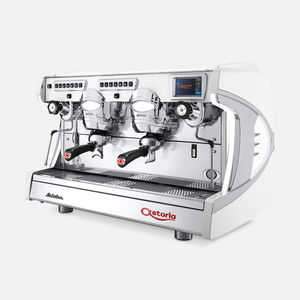

The last one being the region where most of the signature coffee blends come from.Īpart from that, the company also owns a 240-hectare farm on the slopes of Poas Volcano in Costa Rica and grows its coffee there.

These include Latin America, Africa, and the Asian Pacific. Starbucks sources its coffee beans from 3 key coffee-growing regions.

The start of Starbucks is also associated to be the start of what is known as the Second Wave coffee in coffee history. Whether you like Starbucks or not, you cannot deny that it has massively popularized the coffee culture in the world and revolutionized the coffee industry. The biggest coffee company in the world started as a roaster and retailer of whole and ground bean coffee at a single store at Seattle’s Pike Place Market in 1971 set up by Jerry Baldwin and his two college buddies.ġ2 years later, Howard Schultz, after traveling to Italy and being inspired by the Italian coffee culture and experience, came back with a vision of recreating it in the United States.Īfter setting up the successful Il Giornale coffeehouses, Schultz purchased Starbucks in 1987 and, in line with the traditional coffee houses throughout history acting as places for social gathering, he wanted to create a place of conversation and community. We will answer all of these questions and look at some of the best Starbucks blends you can find. See how they look dry compared to the other photo? This is what you want to run through your superautomatic.Are the beans from Starbucks any good? What are the best coffee beans that you can buy from Starbucks? And which ones are recommended for different brewing methods? These beans are actually called Hidden City Espresso, but they are not a dark roast and are therefore not oily. Oak Cliff roasters coffee beans and package I ran a few cups with these beans, and then ended up not using the rest of the bag because I worried they were too oily.Īnd below is an example of what beans look like that are NOT oily, and are the correct type of beans to use in your machine. Here’s an example of beans that I consider just slightly too oily to run through my superautomatic. When you roast it medium or light, you don’t get that second crack, so the roasted bean looks dry. The reason that dark roast beans are oily is because when you roast until the beans are dark, you get a “second crack” of the bean, which releases a lot more of the oil. Then I made it make several coffees in a row and everything seemed to be ok, and my machine has been fine ever since. I ended up scooping out the coffee beans from the hopper with my hand and got out as many as I could, and then added in some really dry medium roast beans that had almost no oiliness. Because it didn’t! The coffee turns out watery and weak when you hear that noise. What happened was that you can actually hear the machine struggling with it, where the beans are so oily that they don’t even fall through the hopper correctly and you’ll hear the machine whine like it didn’t get enough beans to make the cup. I have personally purchased coffee that turned out to be much oilier than I expected, where it was an expensive bag so I tried to run it through my machine.
#Best automatic espresso machine for dark oily beans manual
I guess what they mean is that if you have a manual machine where you’re grinding it separately then it would be fine, but you don’t want to run those kinds of beans through a superautomatic. It’s kind of funny that they say “any coffee bean can be used” but then they also say at the say time don’t use dark roast, oily beans. If you don’t want to believe me, then here it is straight from the instruction manual of my GE Profile Superautomatic espresso machine. (Also, never ever use flavored beans because that flavor will ruin the taste of all future coffee beans!) They will gum up and ruin your machine, requiring you to send it in for an expensive service. What’s the deal with that? – Alice KĬLEARLY COFFEE REPLIES: Do not use dark roast in your superautomatic espresso machine if the beans are oily, period. QUESTION: Can you use dark roast in a super-automatic espresso machine? Most of the bags I see that are called espresso roast are very dark, but I heard that you don’t want oily beans to go through a super automatic.


 0 kommentar(er)
0 kommentar(er)
